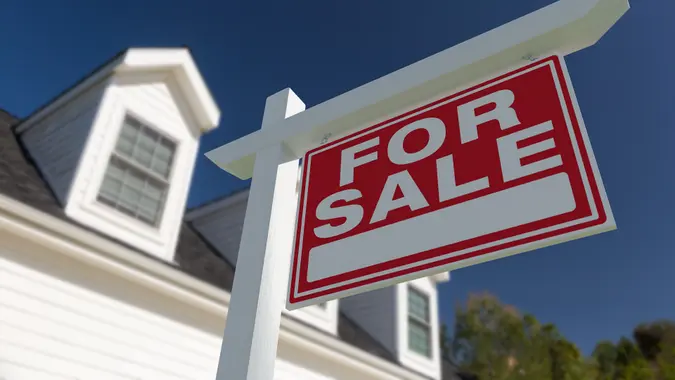March Marked Highest Annual Rate of Home Price Growth in 15 Years

Commitment to Our Readers
GOBankingRates' editorial team is committed to bringing you unbiased reviews and information. We use data-driven methodologies to evaluate financial products and services - our reviews and ratings are not influenced by advertisers. You can read more about our editorial guidelines and our products and services review methodology.

20 Years
Helping You Live Richer

Reviewed
by Experts

Trusted by
Millions of Readers
A limited housing supply and high demand continue to send home prices soaring. March home prices were 13.2% higher compared to March 2020 and up from 12% in February, according to the S&P CoreLogic Case-Shiller National Home Price Index. This also marks the 10th consecutive month of home price growth.
See: Starter Home or Dream Home? How To Decide If You Should Buy Now or Save LongerFind: Here’s How To Get a Home as a Middle-Aged Millennial With Debt
Despite these uncertain economic times, the residential housing market has been booming over the past year. Because low mortgage rates are encouraging more buyers to enter the competitive market, the housing inventory hasn’t had time to recover — pushing prices higher. The last time the U.S. housing market saw this much gain was in December 2005, and is one of the largest gains in the 30-year history of the index.
The index recorded price gains in all 20 cities, with March gains in every city above the city’s median level. According to the report, cities with the strongest price gains continue to be Phoenix, San Diego and Seattle. Phoenix is at the top with a 20% price increase year-over-year, followed by San Diego with a 19.1% increase, while Seattle’s prices rose 18.3%.
Craig J. Lazzara, Managing Director and Global Head of Index Investment Strategy at S&P DJI, explained that the data is consistent with the theory that the coronavirus pandemic caused a shift in where people choose to live, something he thinks may become permanent.
See: 10 Surprising Places Where the Pandemic Housing Boom Is ConcentratedFind: 40 Cities That Could Be Poised For a Housing Crisis
“These data are consistent with the hypothesis that COVID has encouraged potential buyers to move from urban apartments to suburban homes. This demand may represent buyers who accelerated purchases that would have happened anyway over the next several years. Alternatively, there may have been a secular change in preferences, leading to a permanent shift in the demand curve for housing. More time and data will be required to analyze this question,” he expressed.
Mortgage rates for the week ending May 20 were 3% for a 30-year fixed-rate mortgage, up from 2.94% the previous week and down from 3.24% the previous year, according to Freddie Mac’s Primary Mortgage Market Survey. Rates have been hovering around 3% since March.
More From GOBankingRates
 Written by
Written by 

























